Network Monitoring and Surveillance Solutions for TDM, VoIP and Wireless Networks
Overview
GL's Network Monitoring and Surveillance Systems are web-based applications that facilitate display of Call Data Detail Records (CDRs) by connecting to TDM, Optical, or IP probes through a web server for monitoring physical layer, signaling and traffic at various points in such Networks.
The systems can be used for billing verification, remote protocol analysis, traffic engineering, calculating key performance indicators, failure analysis, and call trace functions.
The architecture is uniform across all types of networks, TDM, IP, and Wireless. This results in a reliable user-friendly and uniform approach to Reports, Administration, and Maintenance.
A snapshot of the various Network Monitoring and Surveillance Systems is provided below.
IP Network Monitoring and Surveillance System (VoIP)
GL's PacketScan™ probes are used to capture, and monitor packet flows in real-time within a VoIP network. All major VoIP protocols are supported including SIP, H.323, Megaco, and MGCP.
PacketScan™ also performs detailed analysis of voice band streams gathering QOS statistics such as Mean Opinion Score (MOS), Total packet count, Reordered, Duplicate and Missing Packet counts, Gap, Jitter, and Delay.
The essential elements of the system are:
- GL's PacketScan™ acts as a probe and gathers IP packet information in a nonintrusive fashion, and forwards call detail records (CDRs) as well as statistics to a central database.
- A central database stores the real-time and historic data into a relational database (Oracle) using ODBC. A web-server accesses the data and allows clients across WAN to view results. It provides a user-friendly interface to query and display database custom records.
- NetSurveyorWeb™ facilitates result display using a web interface. With this, one can view real-time and historical data, navigate through records, filter the collected VoIP traffic summary, and graphically analyze the Answer Call, MOS, Call duration, Failed calls, Session request delay, PDD, call flow of the messages exchanged and set alarm conditions and generate email alerts and so on through a simple web browser.
Supported VoIP SIP (SIP and H.323), SIGTRAN KPIs include -
- Answer Call
- Call Duration
- Listening MOS
- Conversational MOS
- Session Request Delay (Successful Calls)
- Session Request Delay (Unsuccessful Calls)
- Session Disconnect Delay
- Failure Cause
- Average Packet Loss
Supported Protocols:
- SIP, SIP-I, SIP-T, H323, MEGACO, MGCP
- SCCP (Skinny), SIGTRAN - SS7, ISDN
- All traffic - Digits, Tones, Voice, Video, T.38 Fax
For more details user can visit VoIP & IP Network Monitoring and Surveillance system page.
Wireless Network Monitoring and Surveillance System
GL's Wireless system provides a uniform method for monitoring the various protocols and content of LTE, VoLTE, UMTS, GSM, GPRS protocols over All-IP, T1 E1, T3 E3, SDH and SONET networks. Intelligent protocol analyzers extract relevant content and supply this to a central Network Monitoring and Surveillance System (NMS) for storage, display, and control.
The essential elements of the system are:
- GL's PacketScan™ can non-intrusively capture, segregate, monitor and collect statistics of almost all VoIP and Wireless protocols and traffic types over IP network.
These probes can process protocol information at varying levels (intelligent software) to extract information of choice and communicate with the NMS through TCP / IP.
- NMS include a central database for historical and near real time data storage, a WebServer for "browser based" access to information. The web-based client NetSurveyorWeb™ connected to probes through a web server facilitates real-time data view, navigate through records, filter the collected traffic summary, and graphically analyze the results. It also provides callflow of the messages exchanged and generate email alerts.
Supported LTE, GSM, IuPS, IuCS, TRAU KPIs include -
- Total Billing Duration
- Call Setup SUccess Ratio
- Call Drop Ratio
- Successful HO preparations
- SMS Success Ratio
- Call Failures Due to Different causes
- Total CSFB Count
- Number of ERAB established
- Total Intra LTE Handover Count
- Successful RAB Assignment Count
Supported Protocols:
- LTE, Diameter, IMS (over IP)
- GSM A, GSM-R (over IP)
- GPRS Gb and Gn (over IP)
- UMTS IuCS, IuPS, and IuH (over IP)
- All traffic - Digits, Tones, Voice, Video, T.38 Fax, Mobile GTP Traffic
For more details user can visit Wireless Network Monitoring and Surveillance system page.
TDM and Optical Networks Monitoring & Surveillance System
(T1 E1, T3 E3, OC-3/STM-1 OC-12-STM-4)
GL provides a uniform method for monitoring the various protocols and content of SS7, ISDN, GSM Abis, TRAU and non-intrusive protocol analyzer probes for a network monitoring and surveillance of T1 E1 / T3 E3 / Optical lines, including line health, nonintrusive diagnostics, and much more.
This system provides a uniform method for monitoring the various protocols and content of SS7, ISDN, GSM, and other protocols over T1 E1, T3 E3, SDH and SONET networks.
The essential elements of the system are:
- T1 E1 / T3 E3 / OC-3 / OC-12 Hardware probes non-intrusively monitor networks for both signaling and data, including ISDN, SS7, GSM, TRAU, and others. These intelligent protocol analyzers extract relevant contents, and forwards call detail records (CDRs) and statistics to a central NMS for storage, display, and control.
- A listener application interfaces between the probes and the database. The Listener will listen to the streaming data from connected probes, receives data, and feeds the data to DB server. Multiple probes can be connected via TCP to the Database Loader.
- The NetSurveyorWeb™ is driven by nonintrusive T1 E1 / T3 E3 / Optical hardware probes, intelligent software, and a database engine. With this, one can view real-time data (Probe name, Disposition, Calling number, Called number, Duration, ...), navigate through records, filter the required call records (based on the start time and date of each call), call flow of the messages exchanged and generate email alerts through a simple web browser and custom filter option allows users to filter the call records based on various signaling and traffic data.
Supported ISDN, SS7, T1 E1 Layer1 KPIs include -
- Call Completion, Call Types
- T1 E1 Events
- Call Completion
- Disposition Count
- Billing Duration
- Message Counters
- Link Message Counters
Supported Protocols:
- SS7, ISDN
- GSM A, Abis, GSM-R, TRAU
- UMTS IuCS, IuH
- All traffic - Digits, Tones, Voice, Fax
For more details user can visit TDM Network Monitoring and Surveillance system page.
Digital T1/E1 Line Monitoring and Surveillance
GL's T1/E1 Network Monitoring System provides network wide monitoring and surveillance of T1 and E1 lines including line health, intrusive diagnostics, non-intrusive monitoring, and much more. It’s a web-based client connected to SS7 / ISDN / DCOSS / TDM probes through a web server that facilitates result display. Maintenance engineers can securely access the network view from literally "anywhere" wherever Internet access is available. They can also monitor, diagnose, and troubleshoot remotely with simple to use scripts.
The essential elements of the system are:
- PC based T1 and E1 probes that collect physical and line level status and performance information. The Intrusive and Non-intrusive "probes" for TDM networks are deployed at strategic locations in a network. They can transmit and collect voice, data, protocol, statistics, and performance information. These probes can relay information to a central / distributed Network Surveillance System.
- A "T1 E1 J1 Switch" for non-intrusive monitoring or intrusive diagnostics; The switch is "fail safe" during power disruptions and USB controlled by the PC that houses the probes.
- The web-based client NetSurveyorWeb™ for T1 E1 Physical Layer monitoring provides an instant overall graphical view of the health of the TDM network with drill down to individual lines; secure access through WEB; remote monitoring and diagnostics to troubleshoot any T1 E1 line; and a central database and applications for controlling, collecting, and analyzing the information provided by the various probes.
Supported Alarms
- MTP Layer Status
- Sync Loss, Carrier Loss
- Yellow Alarm, Blue Alarm, AIS
- Frequency Deviations & Power Level
- Customize Alarm Conditions
- Generate email alerts, visual alerts, audible alerts, and even logs
For more details user can visit Digital T1/E1 Line Monitoring System page.
Voice, Video and Data Quality Monitoring System (Wireless, IP and TDM Networks)
This system provides real-time voice quality measurement across a diverse set of networks. Voice calls are automatically placed between end points; quality is measured and provided for display at NMS. Voice measurements include MOS (Mean Opinion Score), Round Trip Delay (RTD), Jitter, Clipping, voice levels, etc.
The system also supports automated data testing on a wireless or wired network; tests include TCP, UDP, VoIP, Route, HTTP, FTP, DNS, SMS, Email, SIMInfo, Phone Info, and UEInfo.
It also includes fully automated Video Conference testing providing Audio and Video MOS QoS results along with several analytical metrics.
The essential elements of the system are:
- Intrusive VoIP / TDM Nodes - GL's VQuad™, is a low-density network probe used for proactive testing of end-to-end voice, video, and data quality. It is a common probe for Wireless, VoIP & TDM networks.
- Various associated applications (Voice Quality, Video Quality, Data tests, Echo and Delay tests, Fax tests, Voice Band Analysis) works with VQuad™ to provide "end-to-end assessment" with additional test and measuring capabilities.
- Voice Quality Testing (VQT) - software for analysis according to widely accepted ITU (International Telecommunications Union) voice comparison algorithms (POLQA, PESQ LQ/LQO/WB). GL also supports mobile device based manual and automated Voice Testing using NetTest VQT app (supported on rooted Android devices) within the network.
- The system also facilitates result display using a simple web browser application VQT WebViewer™. The results are accessed from database that stores real-time and historic data.
For more details user can visit Intrusive Voice Quality Test and Monitoring System page.
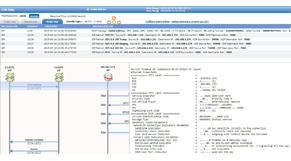
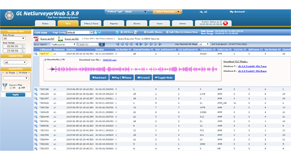
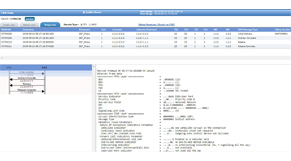
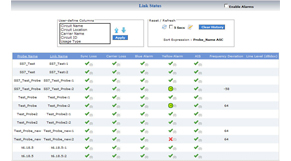
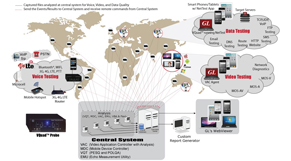
 Back to Newsletter Index Page
Back to Newsletter Index Page